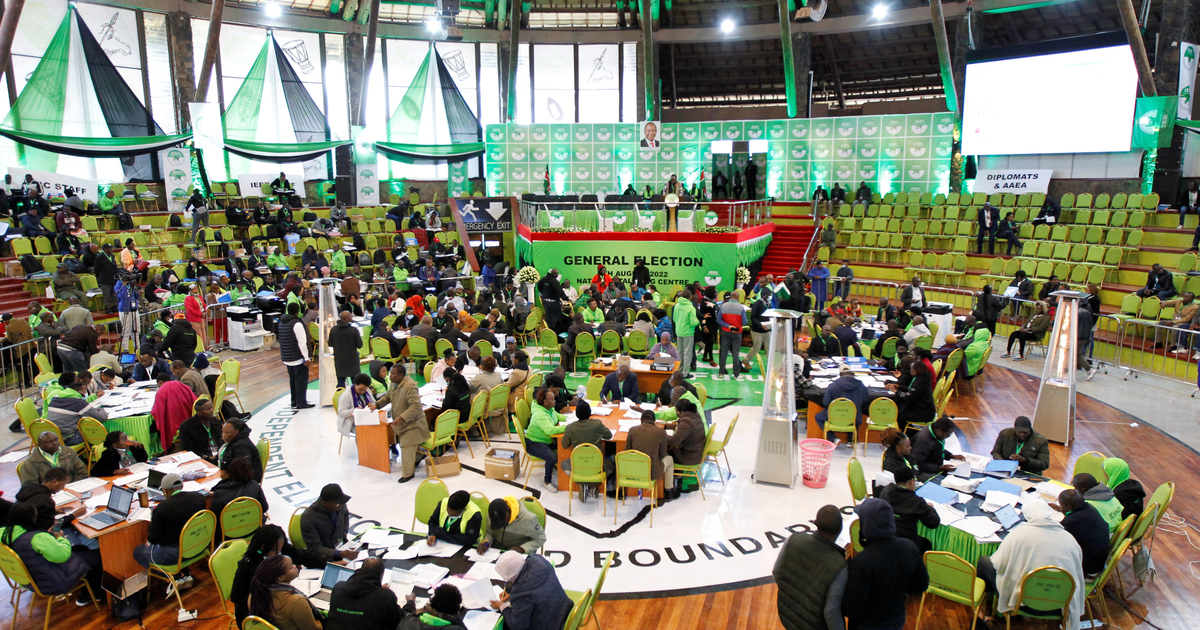This story has been updated to reflect the election results and related developments.
Kenyans had to endure a week of anxiety, consternation, social media misinformation, and low business activity after voting closed on Aug. 9 over the delayed announcement of presidential election results before deputy president William Ruto was declared the winner on Aug. 15. Having garnered 50.49% of the vote, he won against opposition leader Raila Odinga who got 48.85% of the votes.
But why should this happen in a country that regards itself as a hotbed of technology in Africa, and whose population has adopted technology in almost every single aspect of their lives?
Kenyans fear hacking during elections
Mistrust, it turns out, is the major reason why the votes, despite having being uploaded on the Independent Elections and Boundaries Commission (IEBC) website for the first time ever, were still being verified manually at the national tallying center in Nairobi. Earlier in the day, four of the seven IEBC commissioners issued a statement rejecting the results of the presidential elections, a clear sign that the results will be challenged in court.
“Kenyans don’t trust technology to run the electoral process. We are afraid that systems might be hacked. People want to see the votes counted one by one,” Egline Samoei, a tech observer in this year’s election and founder of Brand Moran, a social listening analytics startup told Quartz.
Despite technology’s prowess in enhancing accuracy and tallying speed, IEBC only deploys it at the point of voter registration and identification with the rest of the process done manually.
Kenya is yet to achieve digital transparency and accountability in election data transmission as votes in ballot boxes are counted before party agents at polling stations. Many voters and aspirants fear that digitizing the entire process creates room for rigging. “We’ve seen voters in this year’s election complaining of systems being hacked in favor of opposing sides. It’s an issue of integrity and data security,” Samoei noted.
The reason behind slow election results in Kenya
But chief executive of the Kenya ICT Action Network (KICTANet) Grace Githaiga says an electorate that has trust in mobile mobile transactions must start trusting the same technology to transmit and verify election results faster. However, the right people must be behind the tech system.
“Tech is seen as neural but it doesn’t run elections on its own. People behind the tech run elections. It is a case of garbage in, garbage out. If we key in the right data on the right verification mechanisms, then we will get verified election results,” she told Quartz.
The lack of faster results verification has fueled misinformation and allegations of rigging in Kenya’s cyberspace. There have even been claims of hacking of portals owned by media houses that were transmitting presidential election results, and an algorithm inserted in the verification system.
Chris Msando and the 2017 elections
During the 2017 presidential vote tallying, IEBC’s ICT director at the time Chris Msando disappeared in unclear circumstances and was later found dead. Raila Odinga, a front runner in the top seat election then, claimed that Msando was killed after he refused to surrender a password that was used to rig the presidential elections. The supreme court would later nullify the presidential election and call for a fresh one.
But to get presidential results faster in future, IEBC will have to educate the public about technology as a tool to enhance efficiency such that votes can be cast, tallied, verified, and sent to the national tallying portal from the polling station.
“The systems themselves also need to be a big part of enhancing trust. Several election tech kits could not identify some voters while in some regions they failed to function. That is part of what this mistrust is about. IEBC must test all kits to ensure they are functioning properly before election day,” Charity Katago, a communications consultant in Nairobi told Quartz.
